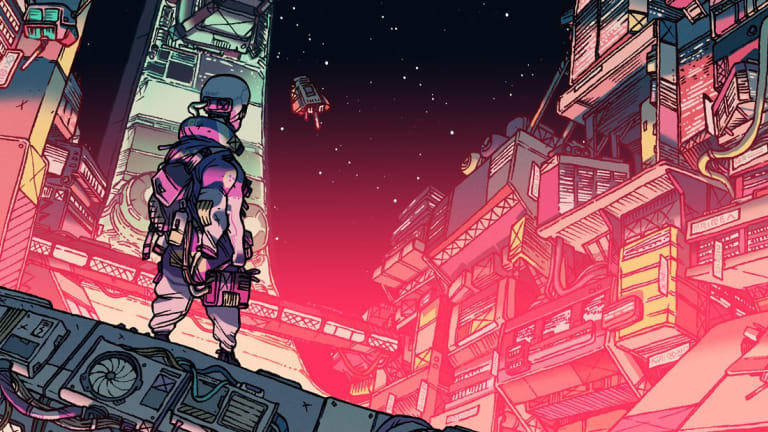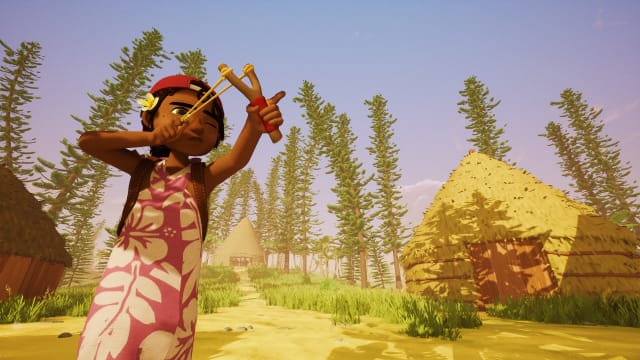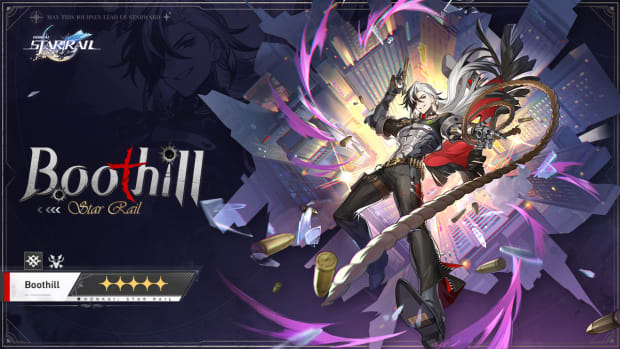
How Citizen Sleeper became "a whole urban fabric of stories"

Citizen Sleeper was one of the biggest indie hits of 2022. Its dark sci-fi world is stuffed with interesting characters and compelling stories that you can follow as much or as little as you like, all while you skirt around the edges of a failing society, just trying to get by.
We had the chance to speak with the game’s designer and writer, Gareth Damien Martin at WASD, part of the London Games Festival, to talk about what went into creating such a memorable narrative experience. With Citizen Sleeper’s beaten down and harsh world, it’s easy to come away from the game with an anti-capitalist message, but that’s not what Martin set out to do.
“It’s true, maybe, that Citizen Sleeper is anti-capitalist, but I didn’t want to make a game that was about anti-capitalism,” Martin says. “I wanted to make a game about what it’s like to try to build a life in capitalism.
“So it’s not necessarily about ‘what else could we have?’ it’s about the experience of being this tiny person under the shadow of this vast machine, living in the ruins of a system that doesn’t function, and knowing that any day that thing can move and you’re going to be crushed. Does that make your life meaningless, or does that give everything you do meaning?”
To Martin, their goal with Citizen Sleeper was more to outline the experiences of living at the bottom of capitalist society – something they have plenty of experience with.
“I’ve spent time unemployed, time doing contracts, time working for employment agencies, and just having an empty week and desperate for money to try and pay rent,” Martin explains. “[I’ve been] phoned up on a Saturday morning like, ‘You have to get to a bar Saturday night that you’ve never been to before’ – and that’s the one day of the week where you’re feeling so so sick, but it’s like ‘I’m gonna have to do this shift because if I don’t, there won’t be another shift and I won’t have money to pay rent.’
“I’d seen that all around me and I would like to talk about that, and that means talking about capitalism because capitalism is the reason that experience exists.
“I wanted to explore how we continue to exist, how we keep going, and how the idea of ‘a future’ both dangled in front of us as a manipulative treat and also a genuinely meaningful thing that we can aspire towards. That’s what I tried to represent. Rather than making a point like ‘capitalism’s bad’ – we all know that – I wanted to explore what it feels like to experience that.”
To tell that kind of story, Citizen Sleeper needed well-defined and likable characters, and Martin’s approach to creating their characters is all about interrogating how a person’s circumstances clash with their personality.
“I’m really interested in the structural context that surrounds a character and using that to inspire them,” Martin says. “That’s what I observed in a lot of people I’ve met. I can tell you one thing about the gig economy, it’s very good if you’re a writer because you will have met so many people and seen so many different walks of life.
“You’ll have been part of the night people of the city who finish work at 4am and go for a drink in the only bars that are open, or the people who do all their work in the morning. All of those people I met are particular people in particular circumstances, and those two things don’t always match. When I’m making a character, I’m thinking about that. What kind of person is this? What are their values? But then what situation are they having to use those values inside?
“So if you think about someone like Lem, Lem is someone who is not prone to intellectualizing a situation, he’s very emotionally driven, but he also believes in stoicism and that he should be responsible for others. So because of that, Lem is slowly starting this process where he’s starting to intellectualize what it is he wants. But that’s a process for him – a process that’s inspired by what happens to him in the game.
“That’s where I get really excited about characters. Not how the context affects them, like, ‘Their bad upbringing means they’re a bad person’ but instead how you have character traits and context, and over time those twist and turn against each other to create interesting, meaty drama.”
One of the biggest challenges story-heavy games can have is finding a suitable gameplay loop to aid the telling of that story. Citizen Sleeper’s dice-based system is something Martin feels was necessary for the game to work.
“I believe very strongly in thematic design in games – taking a very strong theme or idea and always referring back to it in everything,” Martin explains. “Some game designers like to use the idea of finding the gun, but I like to start with a theme and work back from that. Because of that, I spent a lot of time testing things out and seeing if they are giving the feeling I want.
“For Citizen Sleeper, the word [that was central to the game’s theme] was ‘precarity’. There are so many ways to think about it, a social way, a personal way, a structural way – what it means to be exposed to risk – and dice was a way of thinking about that.
“One of the things I did with Citizen Sleeper is a lot of paper prototyping. I knew I wanted to use tabletop mechanics, so I used dice and index cards, and the first time that I rolled three ones, I was like, ‘Wow, this feels shit – this feels right, this is exactly what I want.’ I wanted this difficult plate spinning, but where you’re like, ‘Well, what am I supposed to do with this?’ because that really got at the quality I wanted.”
Citizen Sleeper proudly boasts that the freedom and flexibility of the game are similar to that of a tabletop RPG like Dungeons & Dragons, but Martin was careful about not allowing the scope of the story to spiral out of control despite so many branching paths.
“When you actually run RPGs, there are only so many types of story that end up being told – mostly dictated by the system,” Martin says. “In Dungeons & Dragons, you can go and have a whole Strictly Come Dancing arc, but you’re far more likely to go into a dungeon and kill a dragon. So what I found inspiring is that stories are everywhere – wherever the player goes, it’s the DM’s job to make a story happen there.
“So I tried to think about my world like that. So I thought, if I have a bar, and I have this street food vendor, and a doctor, and a mercenary, there’s got to be a story there. Every player doesn’t have to experience that story but I want to say to the player, ‘If you spend time there, then you can get to know what happens there and you can get involved or not’.
“I wanted that feeling of discovering a story and there being a whole urban fabric of stories that implies there are always stories that the player’s not seeing.”









